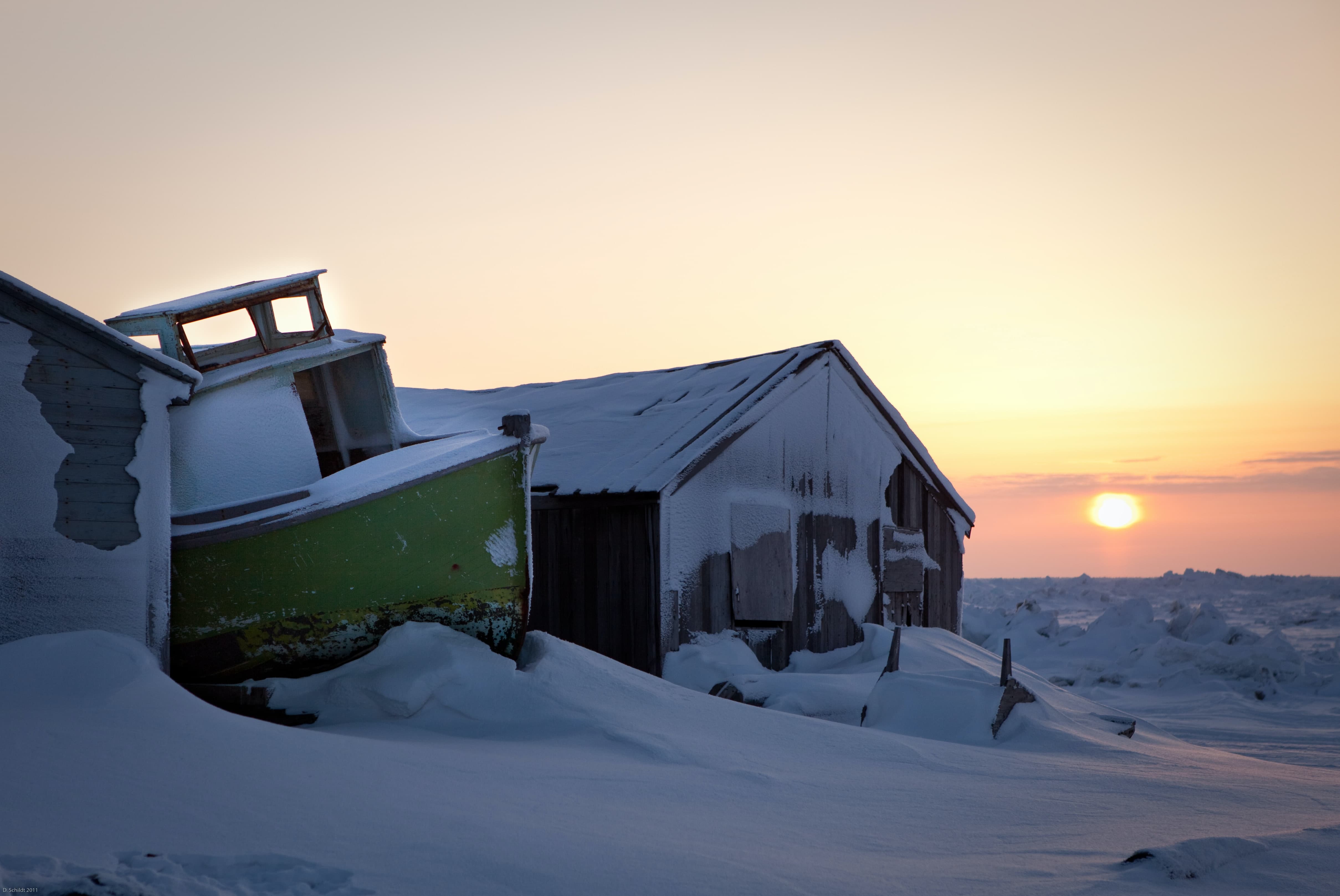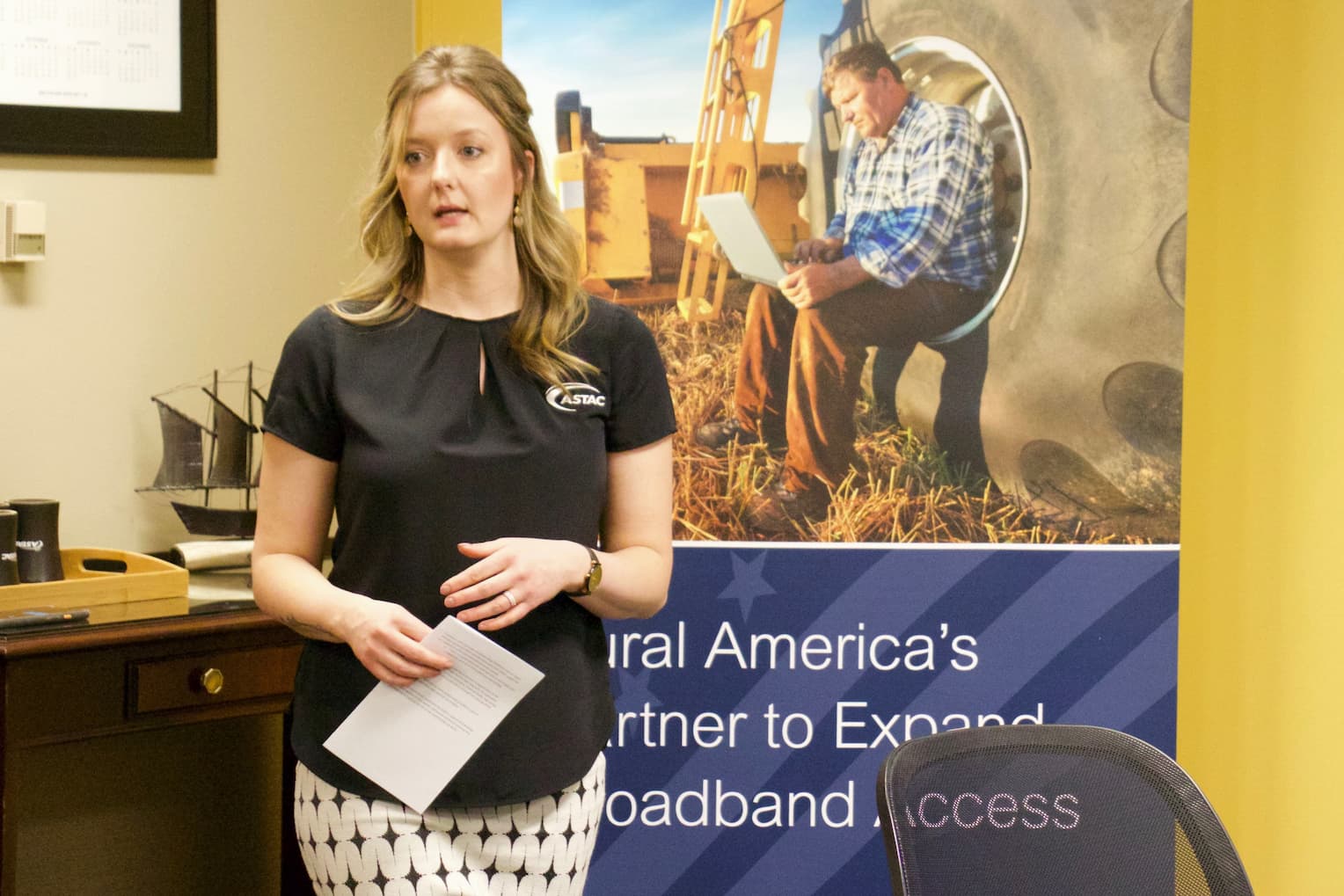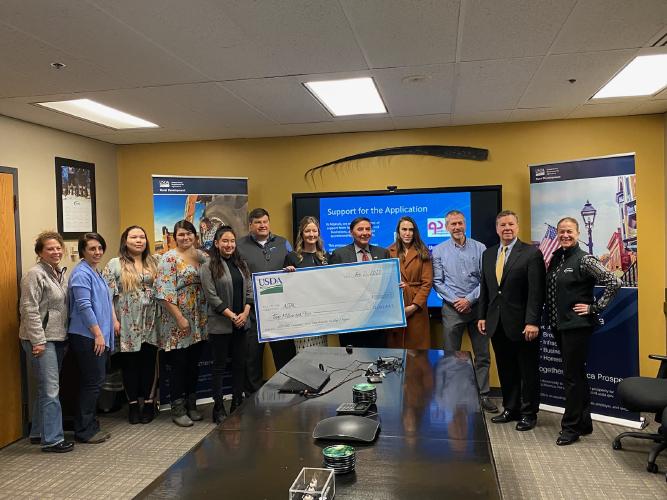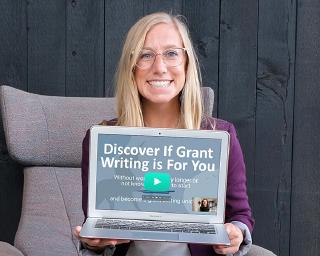Maybe some of you can relate to Emily’s story? Emily was thrust into a grant writer role at work because no one else wanted to do it.
Winning a USDA Grant
What was the first grant she was asked to do?
A massively complex USDA Rural Utilities Services Community Connect Grant. She worked tirelessly (or rather she worked until she was quite tired!) to prepare this behemoth of a federal grant application.
The verdict? No go. Not funded.
Now, this is where many would give up. As tempting as it is to give up, resist the urge and contact the funder for a debrief meeting. You always, always, always want to reach out and understand what can be done better.
Some discover their application wasn’t eligible or a poor fit. Be aware that if you take our grant writing training, that should never happen to you! We teach you how to find the right grants in the first place, so your precious time is spent wisely.
But... even if you find the right grant, it might not be successful. That’s okay! Don’t beat yourself up. Nobody bats a 100% success rate. The magic comes in learning from the funder where your application fell short so you can address those concerns.
Emily was thorough in gathering feedback from the funder. She discovered that her organization, the Arctic Slope Telephone Association Cooperative, needed to have a more robust public involvement process to prove community need.
Let’s back up and provide an overview on the project. It proposed bringing broadband fiber connectivity from Utqiaġvik - the most northern community in the United States - to Atqasuk, a rural village of about 300 residents.

Photo by Deborah Schildt on Unsplash
Do you recall the days with satellite internet? Do you remember loading a page and then leaving to make a burrito (or whatever you do) because that’s how long it would take for the page to load?
That’s what the people of Atqasuk have been dealing with! Not for much longer, however, as the $6.5 million project will soon bring broadband connectivity to every home.
Specifics aside (watch the video interview for full details!), there are several key takeaways that Emily shares that we think you will like.
Prove Public Involvement and Support
The USDA knew that the project was supported by the community, but the application didn’t prove community need. To address this, ASTAC launched an intensive public outreach campaign which included questionnaires to every household.
As you can imagine, getting questionnaires back from a community with extremely slow connectivity was quite a challenge. ASTAC got creative, however, and even let residents take a picture of their surveys and text it to them.
The surveys helped tell the micro-stories that bring to life why the project is important. For example, one resident shared how he knows there’s this resource (called YouTube!) to learn nearly anything. He would love to use it to improve his auto mechanic skills, but it’s literally impossible to download a video in Atgasak.
Another story was shared by the Food Bank of Alaska. They described the incredible logistics involved in helping people get food stamp benefits when there is barely an internet connection to do so.
Getting those stories drawn out, and getting them written down, was a critical step for ASTAC’s application. The stories were documented in the surveys, peppered throughout the narrative, and captured in letters of support.
Pay Attention to Definition of Eligibility
The definition of rurality per the USDA is population density. Under that definition, rural Alaskan communities don’t meet the definition of rural as homes and facilities in a village are closely located together.
It’s ironic, of course, because there is no place in the U.S. more rural than our rural Alaskan communities! Atgasuk is only accessible by bush plane or snowmachine trail in the winter.
As a quick aside - the challenge Emily encountered here to prove eligibility is not uncommon. Be sure to pay extra-close attention to the nuances of a grant program to be 100% positive you have met the eligibility requirements.
A habit we have started doing is including a one-page summary at the beginning of our grant narratives showing clearly that we meet eligibility requirements. If you want us to talk about this more, let us know in the comments!
Back to Emily!

What Emily Learned from Grant Writing: From Start to Funded
Confidence! She said, “Your workshop gave me the confidence to fake it until I make it!” It’s true! Grant writing requires jumping in, getting a little out of your comfort zone, but having confidence in yourself to figure it out.
Emily said she also appreciated the budget template we provide and getting instruction on how to use it. As she so aptly said, she could see how people could get really bogged down and mired in the stress of a grant budget.
It was music to our ears to hear that Emily didn’t let the budget derail her. Download the budget template from our free resources page here.
She also liked learning how to prepare a grant narrative skeleton. In the interview, you will hear her reference getting the “bones” set up. We sound like it’s Halloween around here year-round!
What we mean is that it is enormously helpful to prepare an outline to your grant narrative before starting to write your proposal. When you do this, it becomes clear where you have gaps in knowledge.
You can take those gaps to your kick-off meeting with your team and be more specific about what you need to prepare a successful grant application. Emily said she spent more time on the grant narrative skeleton than she would have otherwise because of what we taught.
Key Takeaways
When asked what else aspiring (or current) grant writers should know, Emily said:
- Don’t be afraid to contact the funding agency. Ask questions!
- Think creatively to meet requirements and make your case.
- Set up a grant narrative skeleton before doing any serious writing.
If you want to get a copy of the budget spreadsheet and learn how to use it, you can sign up for our free grant writing class on the 7-steps to write winning grants.
Free Grant Writing Class
Learn the 7-steps to write a winning grant application and amplify the impact you have on your community.
Access Free Class
Again, congratulations Emily on landing a $3 million grant!




